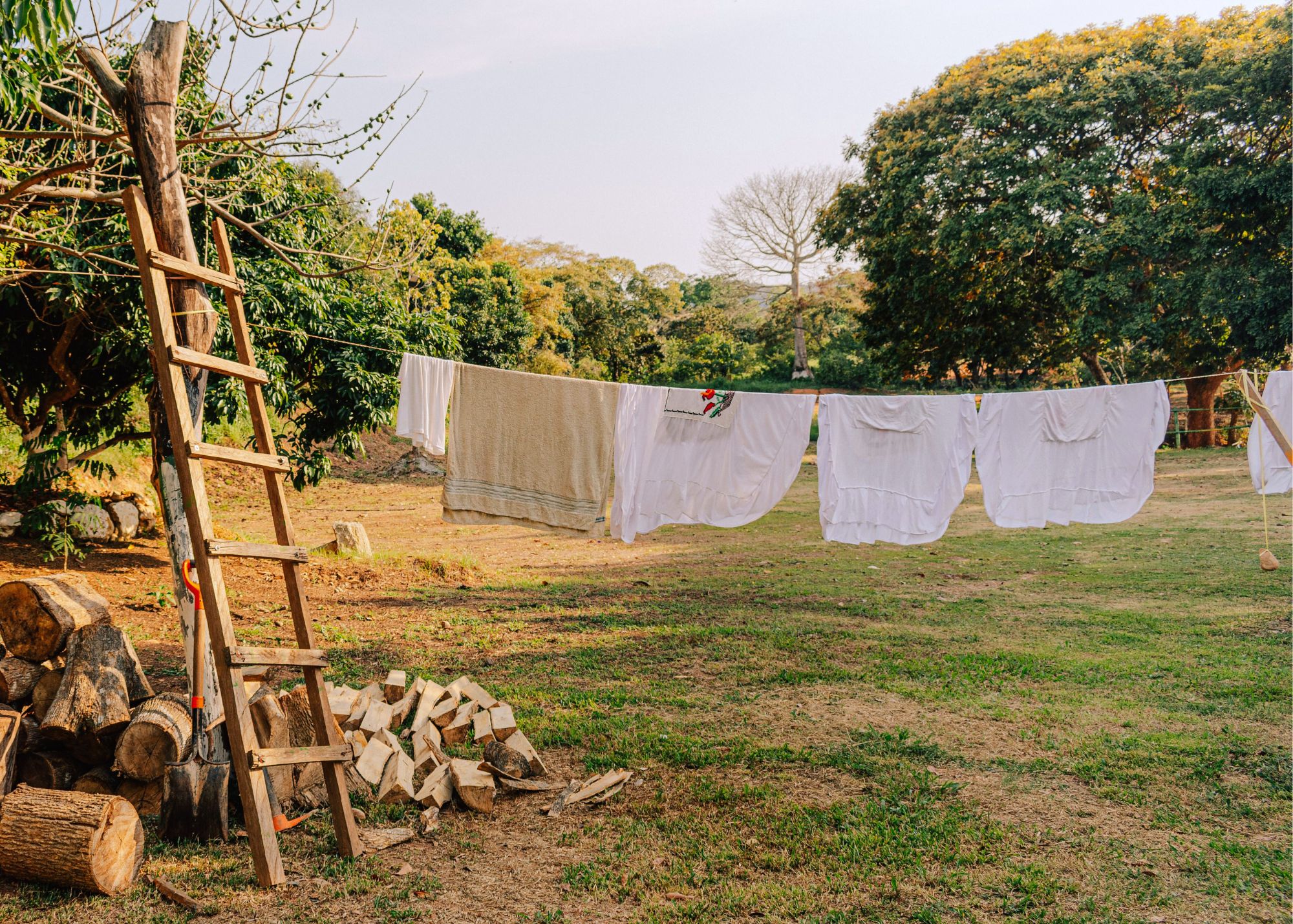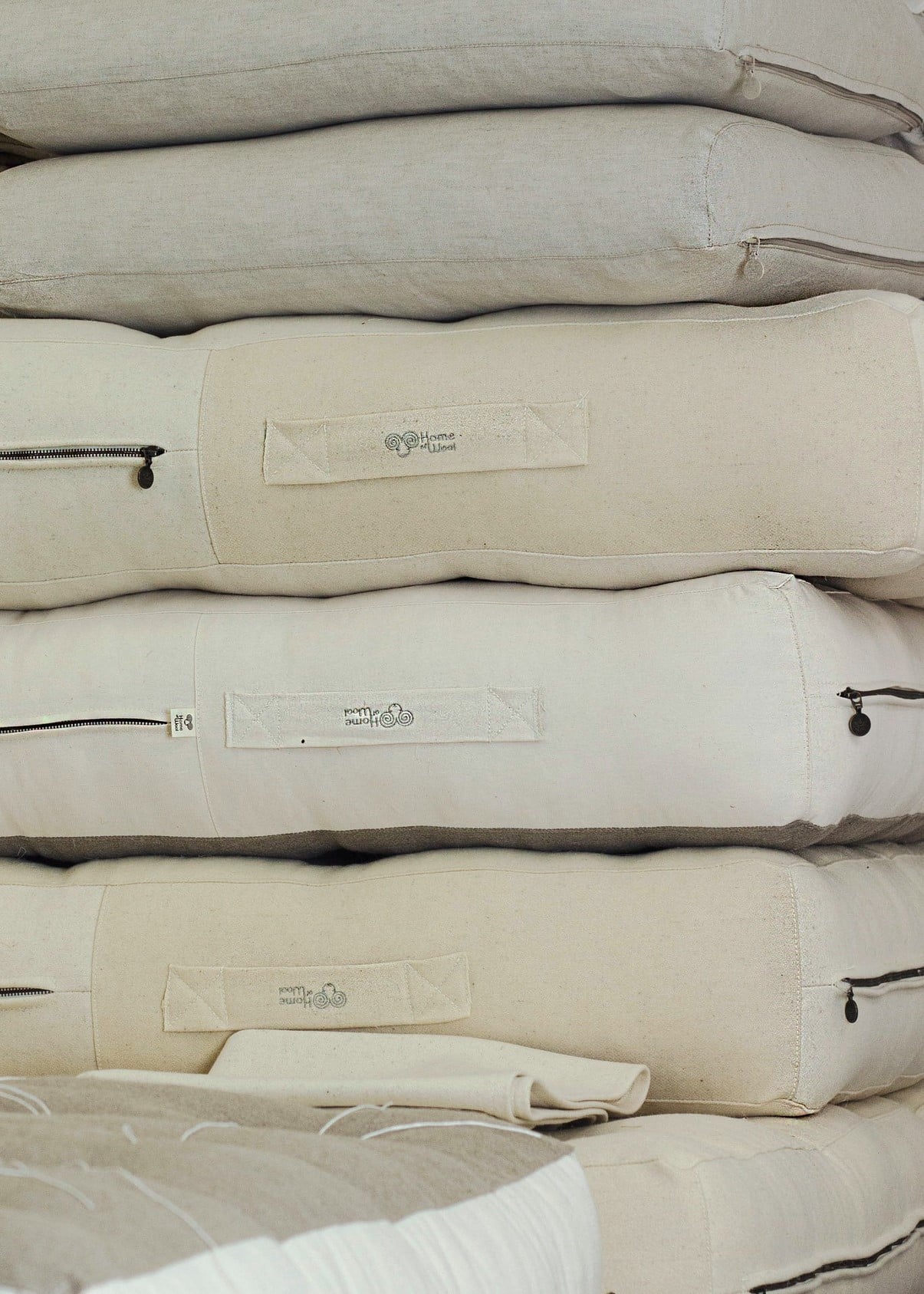In partnership with Home of Wool
Good wool bedding is an investment; one that’s absolutely worth the effort of caring for properly.
It’s also made to last, but only if you treat it right.
It’s the little things you do day to day that will help keep it feeling fresh, extend its life, and make sure it’s always ready for that cosy moment when you climb into bed.
So, before you shove your blankets in the washing machine and cross your fingers, here’s exactly how to keep your natural wool bedding luxuriously fluffy and in great shape for years to come.

The everyday habits to make your wool bedding last
A little regular care will help your wool bedding and mattress stay fresh and ready for the next weekend sleep-in. A few simple habits go a long way to prevent wear and extend the time between washes.
Let it air
Wool can hold up to a third of its weight in moisture without feeling damp, which is impressive, but also a good reason to give it some fresh air occasionally. Every couple of weeks, hang your quilt or mattress outside. A few hours in the sun is ideal as UV light helps kill bacteria and reduce odours naturally.
Sustainability, straight to your inbox
Monthly tips, stories, and inspiration to make living greener easy

Shake it out
Every time you change the sheets, give your quilt or wool topper a good fluff. It redistributes the fill, keeps it cosy, and stops it from clumping in one spot.
Rotate regularly
Wool mattresses and toppers benefit from rotation every few months. It helps the filling settle more evenly and avoids permanent dips or soft spots. Some mattresses can be flipped too, so check the label.
Use a cover
A breathable cotton or linen cover adds an extra layer of protection against sweat, oils, and the occasional breakfast-in-bed spill. Just avoid waterproof or synthetic protectors, as they can trap heat and stop the wool from breathing properly.
Don’t over-wash it
Wool fibres naturally resist odours, bacteria and dust mites, which means you can go much longer between washes. Experts (and bedding brands like Home of Wool) agree: if it doesn’t smell or look dirty, it doesn’t need a wash.
If there’s a spill, spot-clean. If it genuinely needs a wash, do it gently (we’ll get to that next).
Washing your wool bedding (when it actually needs it)
One of the best things about wool bedding is how rarely it needs washing. But when life happens, here’s how to clean it without damaging the fibres.
Start with spot-cleaning
If you catch a spill early, cold water and a clean cloth might be all you need. Blot gently (don’t rub) to lift the stain, then press with a dry towel to soak up the moisture. For anything more stubborn, use a small amount of wool-safe detergent or castile soap and rinse carefully with cold water.

Baking soda for a quick refresh
Still smells a bit off? Lightly sprinkle baking soda over the surface, let it sit for a few hours, then vacuum it up. This works especially well on wool toppers or mattresses that can’t be washed at all.
When it’s time to wash
Check the care label first, because not all wool bedding is washable. If it is, ONLY use cold water, a gentle cycle, and a wool-safe detergent.
Skip the fabric softener (it clogs the fibres) and never use bleach. For larger items like quilts or toppers, hand washing or using a front-loader without an agitator is safest.
And for drying? Patience pays off
Lay your bedding flat in the shade on a dry day. Direct sun can damage the wool fibres, and tumble drying is usually a no-go.
If it’s a quilt or topper that’s had a full soak, pop a couple of towels underneath to speed things up. And avoid wringing or hanging, which can stretch the shape.
How to store your bedding between seasons
When the weather shifts and it’s time to swap the wool quilt for something lighter (or vice versa), how you store your bedding matters. Packing it away properly helps prevent musty smells, damage to the filling, and those strange creases that never quite go away.
Make sure it’s clean and dry
Before storing anything, check that it’s fully dry, inside and out. Even a small amount of trapped moisture can lead to mould, especially if you’re tucking it away for months. If it’s been spot-cleaned or washed, give it a day or two to air-dry completely. Nobody wants to unpack a quilt that smells like an old washing machine.

Skip the plastic tub
Wool needs to breathe. Store your bedding in a cotton or linen bag (many brands include one), or use a clean pillowcase or fabric storage sack. Avoid vacuum-sealing or plastic boxes as they trap moisture and can flatten the fibres.
Fold or roll it loosely
Don’t pack it too tight. Over-compressing bedding, especially wool-filled quilts and toppers, can damage the structure of the fill and make it harder to fluff back into shape. Fold it gently or roll it with room to breathe.
Add a little natural protection
Lavender sachets, bay leaves or (my favourite) cedar blocks can help keep moths and bugs away and leave them smelling lovely and fresh when you unpack them again. Just avoid anything too strongly scented or oily that could transfer onto the fabric.
Store somewhere cool and dry
Cupboards, linen presses or under-bed drawers work well, anywhere that’s not damp or overly warm. Avoid storing near bathrooms or in sealed containers inside hot garages, or any spot that gets steamy or musty with the seasons.


